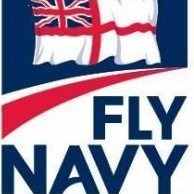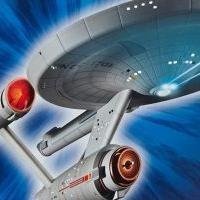-
Posts
223 -
Joined
-
Last visited
About detail is everything
- Birthday 29/05/1966
Profile Information
-
Gender
Male
-
Location
Bristol, UK
-
Interests
British naval aviation
Recent Profile Visitors
2,028 profile views
detail is everything's Achievements

Established Member (3/9)
181
Reputation
-
I knew I read it somewhere - turns out it was on this site. Also of interest is the discussion about four airframes having the AV-8B wing. https://www.britmodeller.com/forums/index.php?/topic/69792-raf-harrier-lerx/ The thread hypothesised that the ZG coded aircraft used the 65% LERX while on Operation Northern Watch duties and were fitted to commonize all the aircraft and help with maintenance of the jets in Turkey. Everything was returned to spec when the Harriers returned home. Thus suggesting those aircraft with 100% LERXs were temporally fitted with 65% LERXs while on Operation Northern Watch duties. The example given is ZG480 - Northern Watch, 65% LERX but with the 'frog eye' inlets indicative of the 100% LERX -fitted aircraft. However GR.7s ZG477-ZG480 and ZG500-ZG505 were initially built with 65% LERX and 'frog eye' inlets, even though they were GR.7s and hadn't had the GR9 wiring update. I think some of these GR7 airframes were used on Operation Northern Watch duties and it was the presence of the 'frog eye' inlets that led persons to jump to the conclusion that they were indicative of a 100% LERX using airframe being temporally retrofitted with a 65% LERX. The RAF may have selected 65% LERX fitted GR7s to commonize all the aircraft and help with maintenance of the jets in Turkey, but I don't think they would have selected 100% LERX using airframes, then temporally exchanged the more effective 100% LERXs for 65% LERXs on those airframes. The presence of both a 65% LERXs and 'frog eye' inlets doesn't necessarily indicate that this happened. It was just the way the particular airframes were built. Easier not to select 100% LERX using airframes for Operation Northern Watch duties than go through the engineering hassle of exchanging LERXs. Of course, someone who was maintaining Harriers on Operation Northern Watch duties, should be able to confirm one way or another. Lastly, I'm not sure the thread really confirmed whether there were any differences between a USMC and RAF wing and if there was, whether they were subsequently changed to RAF spec?
-
detail is everything started following Swordfish Mk.II/III from Swordfish Mk.I , Harrier LERX source , FAA Corsair and 6 others
-
My understanding on the matter, taken from various posts. Not aware of any 100% LERX to 65% LERX changes. Not sure why desirable to do that. LERX The LERX modification is an integral part of the aircraft's flying control system and designed to improve turn and roll rates, though at the expense of additional drag. The RAF wanted a LERX, the US Marines didn't. Eventually a compromise was reached that all Harrier II's would have a LERX that was 65% of the size of the LERX the RAF wanted. Later, when the US Marines realised they wanted a LERX all along a new one was designed, larger than the original compromise solution, and this was the LERX that has passed into history as the "100%" LERX. Every production Harrier II had a LERX, and that LERX was either a 65% LERX as from the original compromise design, or a 100% LERX as from the later AV-8B(NA) onwards. Some GR7s were manufactured with 65% LERXs (as were those GR7s upgraded from GR5s), some were manufactured with 100% LERXs and some started with 65% LERXs but were subsequently retro-fitted with 100% LERXs. Except with regard to last 15 GR7s, a Harrier built with a 65% LERX remains with a 65% LERX and likewise for a 100% LERX. GR.7s ZG477-ZG480 and ZG500-ZG505 were initially configured with 65% LERX and Frogs Eyes, even though they were designated as GR.7s. At some point as GR7s these same aircraft were updated to 100% LERX, the only GR7s (outside of a trials aircraft) to have a LERX upgrade. An aircraft with a 65% LERX was NOT retrofitted with a 100% LERX during the GR9/GR9A upgrade. Fire Access Inlets ("frog eyes") The scoops are fire access inlets for the aft engine bay. Wiring changes on the 65% LERX GR7 to GR9/GR9A upgrades meant that these were blocked and therefore blanked off, to be re-located from their original wing leading edge position to the top of the airframe with the "frog eye" type inlets found on 100% LERX aircraft. Remember there are exceptions to the rule with the last 15 GR7s being manufactured with 65% LERXs and Frogs Eyes in anticipation of the future GR.9/GR9A upgrades. So the presence of Frog Eyes on these airframes doesn't necessarily indicate a GR9/GR9A upgrade. Depends on when a particular airframe went through the upgrade process. It should be noted, for the record, that the GR.5 has 65% LERX only, and the T.10 and T.12 are configured with 65% LERX and Frogs Eyes only.
-
check out these drawings from https://soyuyo.main.jp/f4u1/f4u1-3.html
-
This worked a treat. Many thanks
-
This looks great, though your video doesn't show how you set up the split screen to do the drop and dragging. Also it seems I can't drag and drop photos from Face Book. Does it have to be drag and drop? Why can't I copy and paste the URL in to your Hobbyphotohost tool? Thanks in advance for the advice Simon
-

posting photos from Facebook.
detail is everything posted a topic in Help & Support for Forum Issues
The URLs keep timing out. is there a way to keep the photos in the topics? Many thanks in advance Simon -
I contacted Squadron Prints and this is what they said.. I am not at liberty to say why the roundel has been moved on some of our prints. This is client confidentiality I am afraid. All I can tell you is that this was NOT an error. Sorry if I sound a little vague, but we are dealing with the military. I think that this unusual roundel placement was a one off and temporary application (if it happened at all), possibly in relation to ZM152 and or ZM207 only, though all photos I can find of those airframes, show the standard scheme. Interestingly ZM152 was the airframe that crashed into the eastern Mediterranean on 17 November 2021, during take off from HMS Queen Elizabeth, so unfortunate that Squadron Prints selected that particular airframe for the CSG21 F35 air group print! Looking at this report on the accident https://www.thedrive.com/the-war-zone/f-35-crash-report-includes-sonar-image-of-it-on-seafloor and in particular this image https://www.thedrive.com/uploads/2023/08/11/Screen-Shot-2023-08-11-at-10.05.16-PM.png?auto=webp&optimize=high&quality=70&width=1920 purported to be ZM152 seen on the evening of November 16, 2021, clearly shows that, despite the Squadron Prints print, ZM152, like the other RAF F35s in the 2021 CSG, had the standard scheme.
-
I ask this question because Squadron Prints have published a couple of prints showing this roundel placement. See https://www.squadronprints.com/uploads/images/products/large/squadron-prints-raf-marham-home-of-the-uk-lightning-force-16107192141579.jpg?v3 and https://www.squadronprints.com/uploads/images/products/large/squadron-prints-csg-2021-f-35b-lightning-print-16056292121585.jpg?v3 Squadron Prints have been around for a very long time and they only work from source photographs, producing very accurate artwork. I can't believe they would make such a fundamental error, but I just can't find any photos showing a UK F35 with such a roundel placement. The latter print is of the F35 air group for Group Exercise and Carrier Strike Group 2021, but what photo's I've found of CSG21 or ZM152, show the normal roundel placement below the cockpit as per ZM140 https://www.squadronprints.com/uploads/images/products/large/squadron-prints-raf-marham-f-35b-lightning-print-16875256931652.jpg?v3 I believe the national markings are applied during manufacture and not easily altered. The first application of the UK roundel was and seems to remain as per ZM140 above (i.e. below the cockpit). Anyone able to confirm the back story to this anomaly?
-
Osprey Publications Harrier GR7/9 Units in Combat (CA No. 151) has loads of info on load outs for each conflict flown in, including profiles and pilot reports on how missions were undertaken. Harrier GR 7/9 Units in Combat: : Combat Aircraft Michael Napier Osprey Publishing. It says 'Within the pair, each aircraft carried a different weapon load so as to given the maximum mission flexibility. Generally one harrier would be loaded with two 540-lb freefall bombs and two pods of CRV7 rockets. One would be a training pod containing six rockets, while the other would be a full warshot of 19 rounds. this aircraft also carried a Digital Joint Reconnaissance Pod (DJRP). The other Harrier would be configured with a TIALD pod, one 1000-lb freefall bomb and an Enhanced Paveway II 1000-lb LGB. There is a photo of an Afghan Harrier with the TIALD pod and two Paveway II LGBs. No need for self defence missiles but extra BOL missile rails carried to protect from SAMs. Paveway II LGBs and freefall bombs were green. The 500-lb Paveway IV LGB was introduced in Nov 2007 and appears to be light grey
-
A couple more photos to compare the undersides of the two variants HC4A HC4 Both photos taken on 15 Jan 2024 and posted by Michael Coombes on the Facebook RNAS Yeovilton & RNAS Culdrose Spotters Group pages. Note other differences between the two variants, such as the rotor head, and refuelling point arrangements discussed in this thread
-

Meteor canopies - T.7 vs night fighters
detail is everything replied to Work In Progress's topic in Aircraft Cold War
My apologies -

Meteor canopies - T.7 vs night fighters
detail is everything replied to Work In Progress's topic in Aircraft Cold War
The bottom of the windscreen quarterlight curves on the T7, whilst that on the NF11 is a straight line. Also how the front windscreen panel fairs into the nose. The T7 is much more abrupt. I assume due to the different radar nose contour of the NF11. https://imgproc.airliners.net/photos/airliners/9/2/8/2783829.jpg?v=v40 https://imgproc.airliners.net/photos/airliners/6/7/1/1950176.jpg?v=v40 -
I suspect the aircraft will be operated as a pool with no squadron specific markings. Certainly no ROYAL NAVY. If they had selected 736NAS, there wouldn't have been a problem (I know it is not a front line squadron).
-

Swordfish Mk.II/III from Swordfish Mk.I
detail is everything replied to Wez's topic in Aircraft WWII
The horns on top of the cowling differ from MKI and MKII/MKIII. I think the Navy Wings MKI has the later style so watch out when using restorations as references.




(510x640)-Copy(95x120).thumb.jpg.33073138e01aa81779639a845926753e.jpg)



